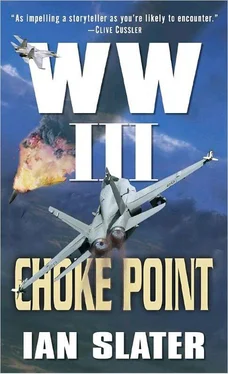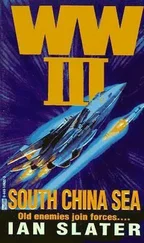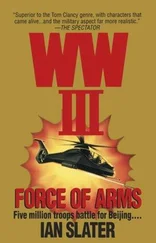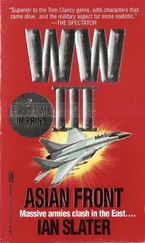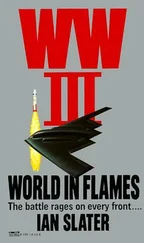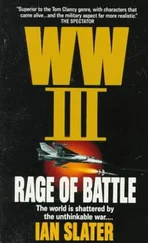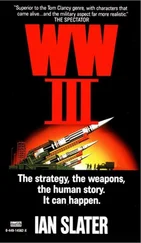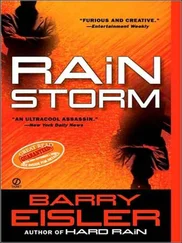The sight of the battle group’s flagship, split keel to hangar deck, was devastating enough as the media arrived en masse in Port Townsend. Some, such as Fox and Britain’s ITN, went farther west along the wild and sparsely populated coast of the Olympic peninsula’s northernmost boundary to cover the story.
Just east of Port Townsend, a clutch of Middle Eastern networks and some European correspondents set up their gear, barely able to conceal their euphoria at the sight of the world’s only superpower humbled by the grievous damage to the aircraft carrier and the outright sinking of one of its premier warships. As if on cue, detritus continued to bubble up from the pressure-flattened wreckage that used to be the USS Utah . Everything from ragged slabs of the anechoic sound-absorbing tiles that had coated the sub’s exterior to the crushed body parts of U.S. submariners floated to the surface.
The shock hit America with the speed of light, on every TV in the country. Word of it got to incarcerated terrorists as well, who were overjoyed by the death and destruction wrought upon the “Great Satan.” The terrorists immediately saw what the Pentagon was slow to recognize — that this naval disaster, within the home waters of the United States, was a catastrophe more serious than the attack of 9/11, whether or not the number of lives lost was greater. Bombing buildings by crashing planes into them was one thing; the British, as New York mayor Giuliani had recalled at the time, had suffered far worse human and material losses in the terrible Nazi blitz of 1940. But strategically and tactically, this attack on the carrier in the Strait of Juan de Fuca had achieved something that shook the government and the military to the core. The enemy had penetrated to the very center of an American carrier battle group, despite its overwhelming firepower and state-of-the-art electronic surveillance. The group, whose whole raison d’être was to protect the carrier, had been brushed aside.
In particular, the White House wanted to know how neither of the billion-dollar Aegis cruisers had detected any unusual underwater activity, along with the sub-hunting destroyers, escort frigates, and the Lafayette-class submarine which, along with the Utah , was supposed to have made any such attempt a near impossibility.
Eleanor Prenty had never liked the war room, or what the staff called “the basement.” It had all the “gee whiz” stuff, but though smoking there had long been banned, she swore you could still smell cigar ash from time to time. And despite its no-expense-spared accoutrements, the room still felt like a bunker. The decor had certainly done nothing to ameliorate the President’s mood.
“C’mon, gentlemen,” he demanded. “What the hell’s going on? Two— two of our capital ships sunk within—”
“The Turner ’s still afloat,” the CNO corrected him.
You dork, thought Eleanor.
“Yes, Admiral,” said the President. “But have you seen the pictures? It’s been gutted — top to bottom.” He was correct, for by now the V, which had reached as high as aft Hangar Bay 4, had expanded under the sustained strain of the initial separation of the bulkheads and was visible as a ten-to-fourteen-inch-wide cleft running the full width of the flight deck, revealing equipment spaces immediately below. And the track for one of the forward catapults was severed.
It was fast becoming apparent to anyone watching CNN, which numbered almost as many who had witnessed the 9/11 implosion of the World Trade Towers, that the Turner might well come apart, separating, as Marte Price diligently pointed out, along the cross deck line of arresting wire number two. The image that caught the public’s imagination, however, was that used by an excited Seattle commentator for CNN who opined that the damage to the Turner resembled an enormous “pie-shaped wedge.” To illustrate his analogy further, the commentator displayed the dramatic picture from the sixties showing how an A-shaped bow had knifed into a thousand-passenger Canadian ferry in the Strait of Georgia. “We are witnessing war in our home waters,” NBC declared solemnly, a truth echoed not as solemnly, and indeed joyously, by stations throughout the Arab world.
“Mr. President,” interrupted an aide, “our surveillance flights confirm an invasion force heading from the Chinese mainland toward the Nationalist offshore islands of Kinmen and Matsu.”
The President was already visibly shaken by the sinking of the Utah and the attack on the Turner —no list of survivors had yet reached him. The aide’s news only deepened his consternation. “Well, right now, Richard,” he said, “we have to prioritize.” It was a word he usually disliked, but he didn’t have the time to think of a better one. “The American military has been taken completely by surprise, and my first job is to defend the United States.” He had already grasped what the think tanks at the Hoover Institution and the National War College would soon be impressing upon TV’s talking heads, namely that if terrorists could penetrate the nation’s military defenses, they could launch attacks against civilian targets at will — anywhere in the United States.
“Do you think they’ll attack Canada?” the Army chief of staff asked.
“No,” Homeland Defense director Harry Hawthorn replied. “Canada’s immigration policy’s a joke. Terrorists love Canada. They won’t attack Canada — be fouling their nest.”
The President nodded his agreement, but he had more important things to worry about than Canada. Besides, everybody already knew the score regarding Canada, its government the quintessential wimps. Full of good intentions, but in world affairs — no viability at all. The country, if you could call its disparate regions that, depended entirely on the United States for North American defense, droning on about “soft” power while the government in Ottawa continued humiliating its small but brave military through such wanton neglect that when Canadian peacekeepers were actually called upon to do something, the Canadian military didn’t have a single air-worthy plane to transport them. Hopeless. The President wanted no more discussion about Canada.
“How far is the carrier from Port Townsend?” he inquired of no one in particular.
“Fifteen, twenty miles west-nor’west in the strait.”
“Is that all?”
“Yes, sir.”
“Son of a— Who’s your man up there, Admiral?” he asked the CNO.
“Admiral Keach was commander of the battle group.”
“You heard anything from him that we don’t already know?”
“No, sir. He’s missing.”
“ Missing? I thought he would have been up in the island.”
“He was, Mr. President — over by the bridge’s starboard wing lookout. Word is, the force of the explosions flung them both overboard. Apparently, the lookouts on the fantail suffered the same fate. Rescue helos he’d sent out earlier to pick up any Utah survivors hadn’t yet returned to the Turner . Anyway, it was pitch-dark.”
“They would have been wearing life jackets, though,” said the President.
“The two lookouts at the stern, yes, sir, but I don’t know about the admiral.”
A sky-blue folder with the presidential seal, containing a thick pile of pages, was placed in front of the President. On the first of the 230 pages was the heading CVN TURNER — PERSONNEL. There were six thousand names, a quarter of them asterisked with either KIA or MIA . The very battle group he’d intended to use to prevent a war in Asia, in a world already at war against terrorism, now lay immobile in the Juan de Fuca Strait. And for one overwhelmingly simple reason: the proudest and most powerful navy in the world had been grievously wounded and humiliated by a bunch of mines, weapons that, the U.S. mining of Haiphong notwithstanding, elicited the kind of contempt in naval officers as that accorded a backshooter in the Old West.
Читать дальше
